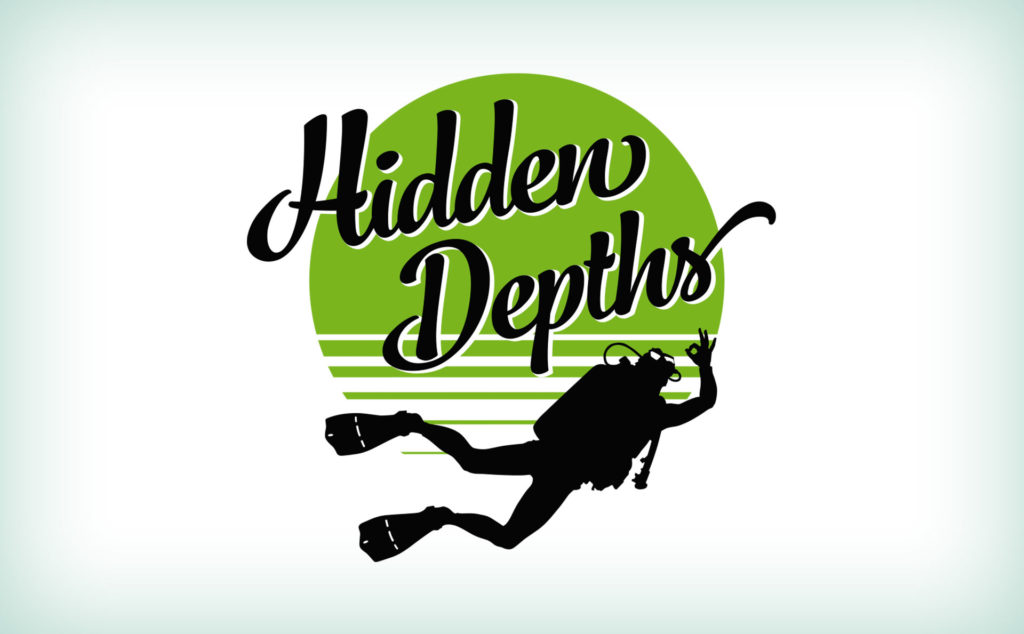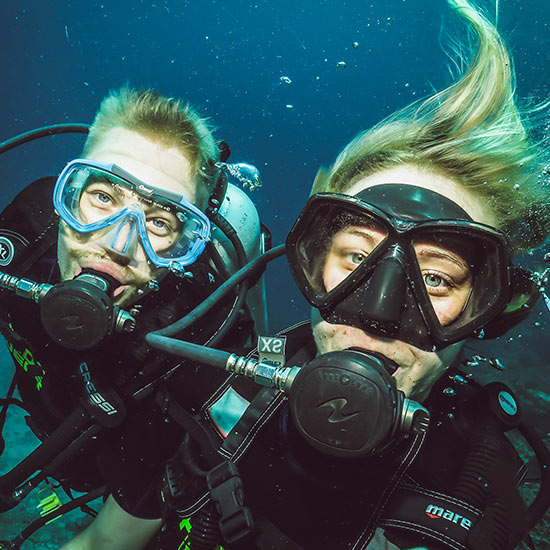Conservation
We are the only dive center in Koh Lanta granted with the PADI Green Star Award
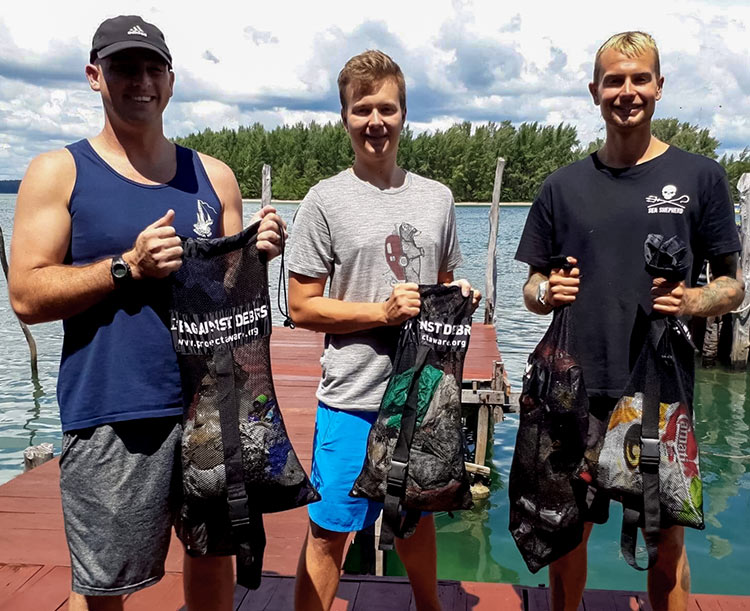
Conservation
We all know how hard it can be to live an environmentally friendly lifestyle. The choices available can seem overwhelming and it can feel that if we cannot do something on a large scale, it just isn’t worth doing. At Hidden Depths Diving, we feel passionately that we can all contribute, just a little at a time, and that we can all make a difference.
We are doing what we can to make a positive impact within the community and to the environment, and are encouraging our customers to do the same.
Drinks
Seeing the rubbish generated by dive boats was so disturbing that we decided to implement a policy to reduce waste. We do not bring disposable plastic drinking water bottles on the boat. Instead, we buy large, recycled bottles of water and decant them into reusable containers. We provide cups for drinking. We do not supply cans of soft drinks, but instead provide large bottles. We estimate that we save approximately 12,000 plastic bottles and cans over a season. Whatever waste we do generate, we recycle it locally on the island.
Energy
Within the dive center, we use energy-saving light bulbs. We only turn on lights when necessary, and encourage staff and customers to turn them off when not in use. Fans and appliances that are not in use are turned off. We do not have air conditioning units within the center, just fans. Our pier overlooks the water and customers are encouraged to sit there and enjoy the breeze!
Water
Kit must be washed after diving to clean it and remove the salt. The water is used for as long as practicable, and when it is finished, we reuse it in the toilets. We have western flushing toilets for our customers, and encourage the use of recycled water to flush the toilets – Thai style! We collect rainwater in a water tank which is then used within the dive center. There are two cold water showers for customers to use.
Boat
We would have loved to put the more environmentally friendly 4-stroke engines on our boat, but unfortunately cost prevented us from doing so. Instead, we have new 2-stoke engines that are serviced regularly to keep them as fuel-efficient as possible. We also have an energy-conscious policy in running the engines. We do not run them at full throttle, causing noise and pollution, but instead at reduced throttle. With this slight reduction in speed, customers still get to the local sites in thirty-five minutes. There is a hand shower on the boat so that customers can rinse off after a dive, using very little water.
Dive Centre
When setting up the dive centre, we used local tradesmen and locally sourced materials whenever possible. We recycled as much of the old pier as possible to avoid the purchase of new wood. All of the materials we did not need were taken away by members of the community to be reused – one man’s rubbish is another man’s treasure! It can be difficult to source environmentally kind products, especially living on an island in Thailand. We use biodegradable or reusable bags and biodegradable cleaning products, recycled paper and have implemented a ‘No Paper’ policy. This means that we will process as much of our administration as we can online to reduce paper use. This also avoids posting documents and so cuts down on postal air miles.
We are proud to be the only dive center on Koh Lanta to have been awarded the PADI Green Star award, in recognition of our environmentally friendly business practices. According to PADI: “The Green Star Award identifies your business as one that cares about the environment and is acting to protect it. When you achieve Green Star Award status, you can show customers you care about conservation”. We are all delighted here to be leading the way in conservation and environmental issues on a local level and are very proud recipients of this award.
PADI Green Star Award
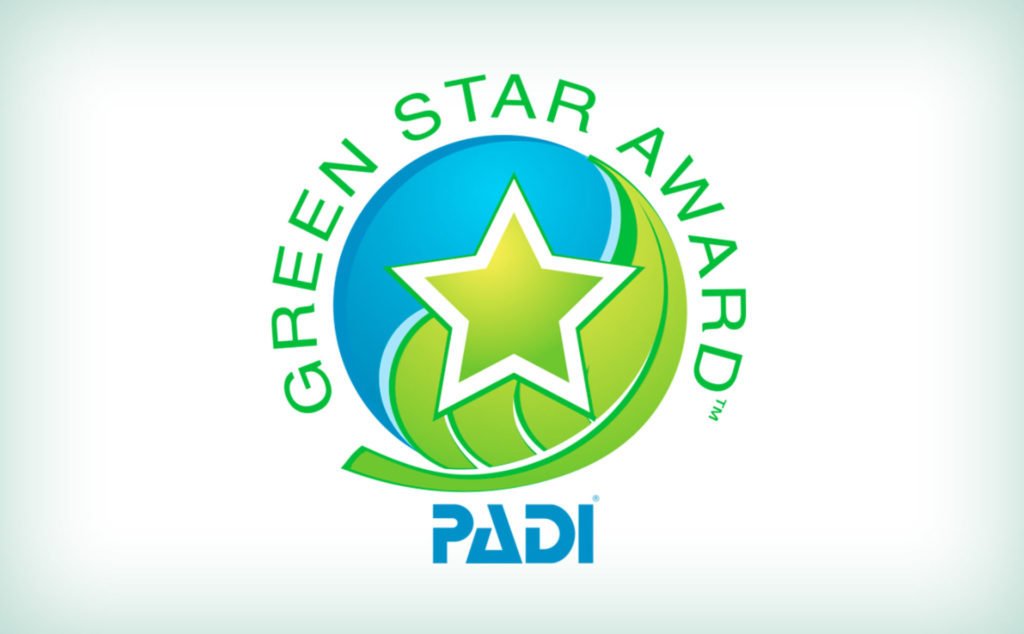
projectaware.org/greenstaraward
Project AWARE® is a program of ocean conservation run and supported by volunteers who share their passion for the sea. From renowned professional of marine ecosystems to any-one who wants to help. Everybody is important and plays an essential role in their mission. Their actions go from very local project in small communities to big global actions that really makes the difference and helps to preserve marine life and environments. The main goal for Project AWARE® is to become a custodian of ocean life and environments thanks to the support of the volunteer communities that make this possible.
Project Aware
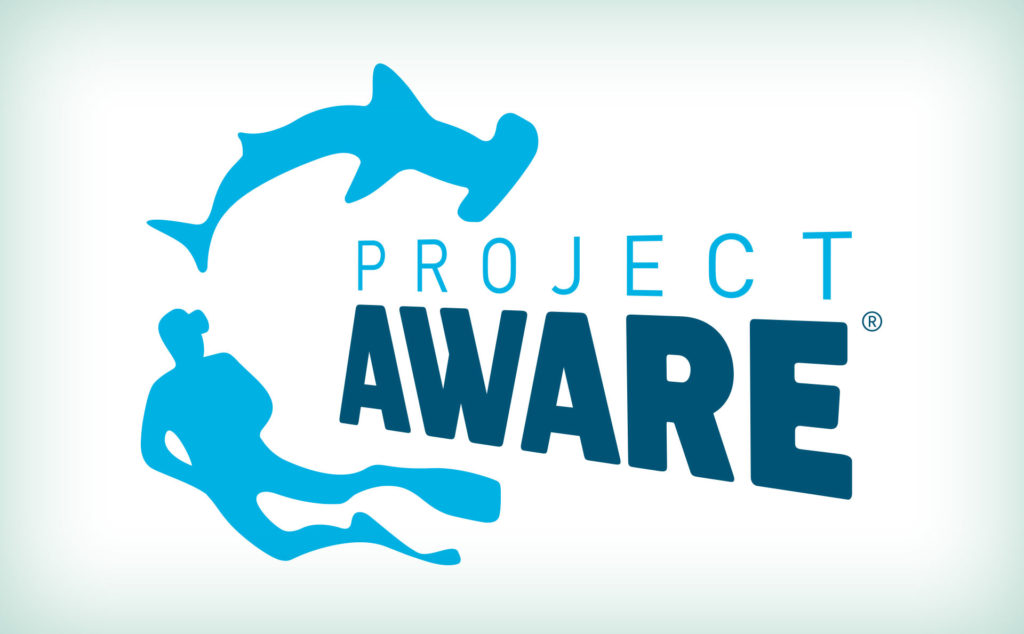
projectaware.org
We believe that divers have the power to make a difference when they dive and by the decisions they make about who they dive with. We encourage all our divers to follow the good diving practices issued by Green Fins and include information within our dive briefings to remind divers how best to dive with the least possible impact on the environment. The mission statement of Green Fins is: To protect and conserve coral reefs by establishing and implementing The Green Fins good diving guidelines form the basis for our dive briefings, reminding customers of diving etiquette. We also have copies of the guidelines available on the boat and in the dive center. An environmental briefing is provided with each dive briefing to remind customers of the devastating impact humans can have on our coral reefs. We remind divers to practice good buoyancy control and have a strict ‘no-touch’ policy. We attend presentations and training sessions arranged by Green Fins so that we can remain up to date on the latest scientific findings on corals and monitoring techniques. At the beginning and end of each season, a Reef Watch survey is carried out and data is forwarded to Green Fins for analysis. We also conduct monthly surveys of an area of reef located at Koh Haa. We monitor the health of this reef and report the findings to Green Fins. If you have dived with us, you can provide an assessment of our environmental practices by completing a Self Assessment form with Green Fins.
Green Fins
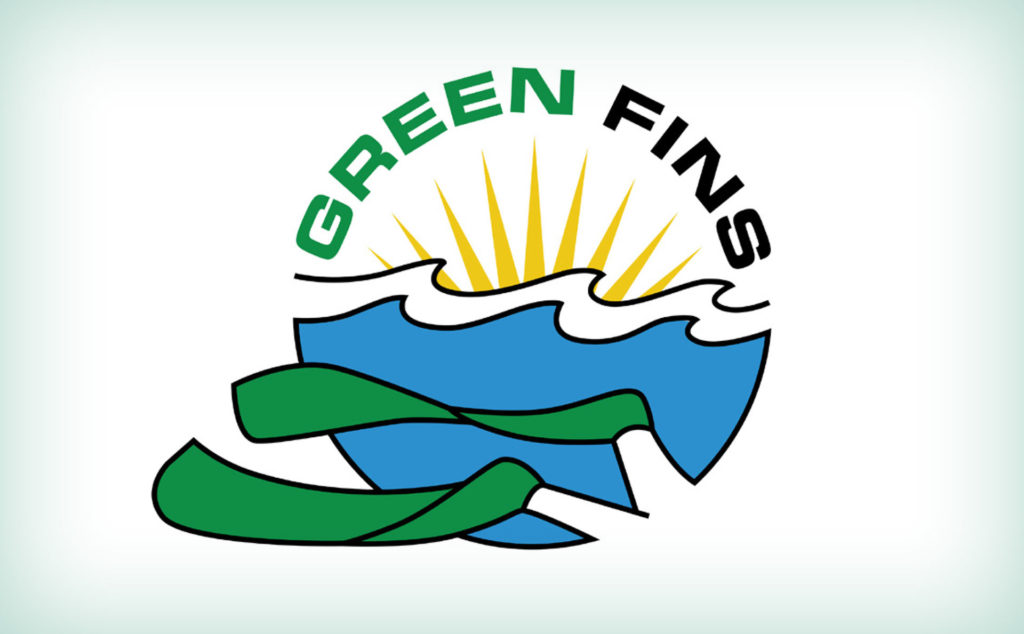
environmentally-friendly guidelines to promote a sustainable diving tourism industry.greenfins.net
Since our first season, we have been involved with the Shark Guardian charity. Set up by PADI Course Director Brendan Sing, and his wife, PADI Instructor Liz Ward-Sing in 2009, their objectives are: · To advance the education of the public in shark species worldwide, enhancing knowledge, skills, and understanding that can be applied to protecting the natural environment. · To advance for the public benefit the conservation of shark species worldwide, through education, conservation, promoting research and projects, seeking to achieve their sustainable management. Brendon and Liz travel all over the world with their presentation, which seeks to educate participants about the importance of sharks to the marine eco-system. They reach out to around 20,000 people each year with their message of shark conservation – an amazing feat. They do a lot of work within schools, particularly around South East Asia, which is very important in educating the next generation about shark issues, especially shark fin soup. Hidden Depths Diving was proud to be the first Shark Guardian Dive Centre in 2012, and we sell merchandise in our dive center to help raise funds for the charity.
Shark Guardian
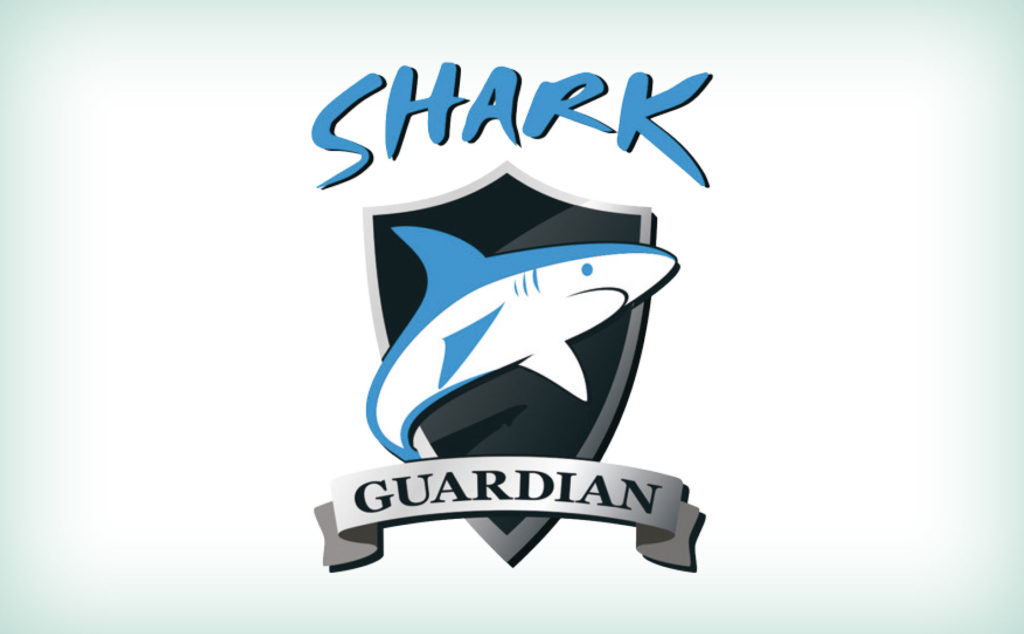
sharkguardian.org
The Spot the Leopard Shark project is a program run by the University of Queensland in Australia and assisted by the Phuket Marine Biological Centre. This program aims to identify as many leopard sharks as possible so that scientists can determine: “population abundance and demography, movement and longevity of wild leopard shark populations.” * The shark that we called a leopard shark is a zebra shark, Stegostoma fasciatum. It is not to be confused with the leopard shark that inhabits the eastern Pacific area, which is an unrelated species. When the shark is young, it has stripes, hence the name zebra shark. As the shark matures, the stripes break down into spots. These are wonderfully docile creatures, with most sightings finding the shark lying motionless on the sea bed. As they are nocturnal, they do not move around much during the day. They are the largest egg-laying shark, and grow to up to 2.5 meters.* The project uses photo IDs to identify individuals, as their markings make them unique. To contribute, a photo should be taken of the right and left side of the shark. This will allow for a clear view of all its markings. If possible, attempts should be made to determine the sex of the shark. The photo can then easily be uploaded on to the Facebook page of the project, together with a note of the location, depth, and dive site at which the shark was seen. The project is the brainchild of Dr. Chris Dudgeon, who has been using this technique to monitor leopard sharks around Queensland for the last ten years. Diver Code of Conduct: · Approach slowly and with good buoyancy control all time. · Advent from the tail, never head-on. · Be aware of the reef and avoid damaging it. · Don´t go closer than 3 meters from the shark. · Always move around the tail of the animal. · Avoid using flash photography. · Don’t block the sharks escape route and avoid the head area. · Do not attempt to touch, ride, or chase a shark.
Spot the Leopard Shark

spottheleopardshark
The Trash Hero organization, is an international movement managed and supported by volunteers. All around the world, their mission is to teach communities how to clean and respect the naturals environments, making this world cleaner, greener, and better. Reasons why we are so proud to support them getting involved as much as possible and keeping a small space in our shop for promoting and selling their products. They do this through: Action and Awareness: The most simple action, but the most effective to combat pollution in natural environments; Pick up trash. They organize picking trash activities and the volunteers just take every single piece of trash from the beach, forest, mountain, lagoon, or any other area designed to be clean. Education: Another very important aspect to prevent trash dumping in the future is to educate the new generations. Trash Hero teaches children around the world to make the new generations the value of nature and our duty to respect and preserve it for future generations. Sustainable Projects: Create long-term programs that help communities to reduce and better manage existing waste, and strategies that will prevent future waste. Inspiration: Developing programs with local communities that last in the time. Creating good habits and conscience to build an eco-friendly lifestyle. Trash Hero Principles: · Be positive: Everything is better with a positive attitude, never is too late to start and taking action, always thinking that the future will be ok. · Be inclusive and neutral: They aim to create a strong bonding between people from the same community, making them feeling part of a common and bigger project. · Show, don’t tell. Repeat: Be a role model, take small actions, and let the others to help and get involved in the projects. The result can be a big change. · Think global, act local: Trash Hero movement is based in small communities taking action on their places, but all well connected as a hive. The results of many small local actions are a big global change. · Be transparent: Local All the activities are paid by donations and volunteers don’t make any profit from their actions. Trash Hero believes that every one of us can be a Trash Hero.
Trash Hero

trashhero.org
The Thailand Manta Project is the regional Manta Trust Affiliated Project for Thailand. Managed by the amazing Jamie Monmaneerat, the main goal of the project is to teach the local communities and divers about the important role of alive mantas in the environment and the country´s tourism economy, and at the same time, to keep tracking the population with their photo-identification system. With the help of professional and amateur underwater photographers, Manta Project is building an extensive database of the mantas population in Thailand. Using the unique individual´s marks, they can know manta´s behaviors, where they go, how long they stay, favorite spots, habits, population, and many more. Thailand Manta Project works with the Thai Government running an educational program in schools, businesses, and small local communities to spread the message of how important are the alive mantas in the environment and the economy of the country. We are so proud to support them getting involved as much as possible with our Manta Ray Program and keeping a small space in our shop for promoting and selling their products. Our Program Join in our Manta Ray Monitoring Program for FREE when you participate on a daily scuba diving trip to Hin Daeng and Hin Muang with Hidden Depths Diving. During dives where manta rays are sighted, we take photographs of the distinctive markings on the underside of each ray. These photographs are then passed on to a conservation organization, together with information about conditions and behavior. We brief divers on manta ray habits and behavior, and encourage our divers to become involved in our conservation efforts. We aim to pass on our dedication to conservation to all our guests. About Manta Rays There are two species of manta ray, Manta alfredi (reef manta) and Manta birostris. The Manta birostris, otherwise known as the giant, oceanic or offshore manta ray, is the ray that visits us at the sites around Koh Lanta. Manta rays eat zooplankton and have several feeding methods including swimming in the water column with an open mouth, feeding at the surface by gulping water, or skimming the sea bed sucking up plankton. Observations have been made of mantas working together in large groups to form chains or patterns to aid feeding. The Manta birostris can reach up to 7 meters or 23 feet. They have dark undersides with spots around the stomach area. The topside is predominantly black with triangular-shaped shoulder patches. It also has the remnant of a stinging spine at the base of the tail. Manta rays are ovoviviparous, which means that their young hatch in the womb and are then born alive. A female will give birth to 1-2 pups at a time. There is still much to learn about them, but it is thought that they can live up to 50 years. Where we see them We have the best chance of spotting manta rays at the dive sites of Hin Daeng and Hin Muang. Home to the deepest wall in Thailand, these sites are manta cleaning stations, and mantas visit there to have parasites removed. We visit the dive sites of Hin Daeng and Hin Muang twice a week in the hope of an encounter. Diver Code of Conduct · Do not attempt to touch, ride, or chase a manta ray. · Do not restrict normal movement or behavior of the manta ray. · Try to remain stationary to allow the manta ray to control the situation. · Maintain a minimum distance of 3 meters from the manta ray. · Do not undertake flash photography. · Do not use underwater motorized diver propulsion vehicles. Threats The greatest threat to manta rays is fishing. They have been targeted for their meat, liver oil, and skin, but more recently their gill rakers have become much sought after in Traditional Chinese Medicine (TCM). Their natural predators are sharks and orcas, and shark bites are frequently observed and used to help identify individuals. Entanglement in fishing nets is another big issue as manta rays are unable to swim backward and so cannot easily swim away. The Red List of Threatened Species issued by the IUCN, the International Union for the Conservation of Nature, places manta rays in the vulnerable category. This is defined as: VULNERABLE (VU) – A taxon is Vulnerable when it is not Critically Endangered or Endangered but is facing a high risk of extinction in the wild in the medium-term future. *Manta facts from Manta Matcher and the Marine Megafauna Foundation
Manta Trust

mantatrust.org/thailand
Working in conjunction with the University of Queensland, Australia, we undertake regular Coralwatch surveys. This activity is available to both divers and snorkelers. We use a slate marked with different colors to compare with the coral at a site. We mark down the reference number of the matching color and then log the information online. The system is very simple to use and can be incorporated in a dive or snorkel trip.
Coralwatch

coralwatch.org
Seahorses are very special creatures, and we love to meet them under our pier. Yes! right under our jetty, we can meet some of these incredible animals. And, of course, we aim to protect them and for that mission, iSeahorse is our allied. iSeahorse is a scientific program created to monitor seahorse populations around the world, based, as many other wildlife conservation programs, in a photo ID. Everybody can participate Just upload the photos of your seahorse sightings and complete some required information. And your Photo ID will be part of the iSeahorse database, useful for a big scientific community who will analyze and process it to take action in conservation programs. Constant monitoring If you have the luck to live or work near one seahorse population, and you have the chance to, from time to time, take a look and some pictures, then you are the perfect candidate to join this project and take action becoming a marine scientist, because, thank of your collaboration, a scientist can continue expanding our knowledge of this incredible creatures. * Resources from projectseahorse.org
Project Seahorse
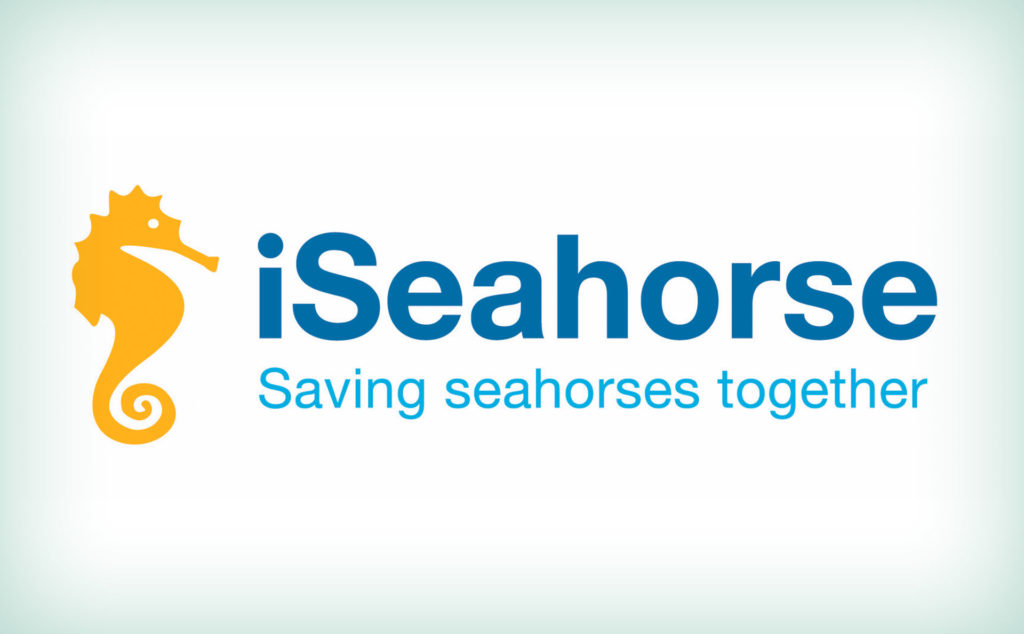
projectseahorse.org
Join in our Whale Shark Monitoring Program for FREE when you participate on a daily scuba diving trip to Hin Daeng and Hin Muang with Hidden Depths Diving. During dives where whale sharks are sighted, we take photographs of the distinctive markings on each shark. These photographs are then passed on to several conservation organizations, together with information about conditions and behavior. We brief divers on whale shark habits and behavior, and encourage our divers to become involved in our conservation efforts. We aim to pass on our dedication to conservation to all our guests. If you want to learn more about shark conservation, you can participate in the PADI Project Aware Shark Conservation Specialty. About Whale Sharks The whale shark is the largest living fish in the world! It is a filter-feeding shark, which means that it sucks in food by opening its massive mouth. They can grow up to 20 meters and weigh up to 20 tonnes. This gentle giant has very distinctive markings, which can be useful in identifying individuals. It is difficult to obtain information about age and breeding habits, but they are thought to live between 60-100 years. Whale sharks are ovoviviparous, which means that their young hatch in the womb and are then born alive. A pregnant female was caught in Taiwan and was found to be carrying 300 embryos, but there is not enough information known to establish if this is the norm. Where we see them We visit the dive sites of Hin Daeng and Hin Muang twice a week in the hope of an encounter with whale sharks. The ocean in this area has a depth of 70-80 meters and currents bring nutrients from depth up to the surface. Whale sharks visit the area to feed on this plankton. Little is known about the migratory patterns of the whale sharks, so we are monitoring sightings of them and taking photographs to provide scientists with data to get a more accurate picture of their habits. Diver Code of Conduct We always advise our divers on how to conduct themselves underwater in their dive briefing. We provide specific advice on diving with whale sharks on dives where there is a chance of an encounter. Here are the guidelines we provide: · Do not attempt to touch, ride, or chase a whale shark · Do not restrict normal movement or behavior of the shark · Maintain a minimum distance of 3 meters from the whale shark · Do not undertake flash photography · Do not use underwater motorized diver propulsion vehicles Threats The greatest threat to the whale shark is man, which is ironic considering they are no threat to us. The Red List of Threatened Species issued by the IUCN, the International Union for the Conservation of Nature, places whale sharks in the vulnerable category. This is defined as: VULNERABLE (VU) – A taxon is Vulnerable when it is not Critically Endangered or Endangered but is facing a high risk of extinction in the wild in the medium-term future. Organizations we work with We are committed to working with organizations that are collating information about sightings of whale sharks. It is hard to get an accurate picture of numbers due to their massive habitat area so every confirmed sighting will help add to the knowledge the scientific community has. The organizations we work with are: Wildbook for Whale Sharks – www.whaleshark.org This is a photographic library containing over 43,000 photographs and 20,000 sightings recorded and is supported by the Marine Megafauna Foundation. The data provided to these organizations is used by scientists to help them understand whale sharks and aid in decisions about conservation. By diving with Hidden Depths Diving, you are contributing to the knowledge held by the scientific community about whale sharks and will help shape policy in the future about their status, research projects, and identification. Whale Shark Project – www.whalesharkproject.org This a project run by The Shark Trust and Project Aware to encourage all water users internationally to record their sightings to provide a better understanding of the behaviour, population and biology of whale sharks.
Whale Shark Program
